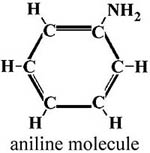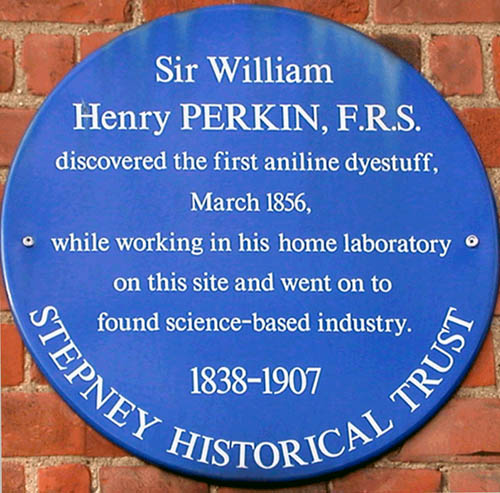William Perkin & Dye
Today, a retiring chemist shapes an industrial world. The University of Houston's College of Engineering presents this series about the machines that make our civilization run, and the people whose ingenuity created them.
Meet William Henry Perkin, born in London in 1838. By then, the young German chemist, Justis von Liebig, had created the prototype of the modern R&D lab, and chemistry was becoming a new means for creating new products. Chemistry was in the air and Perkin caught a whiff of it. At fifteen, he enrolled in the Royal College of Science, where he was soon made the assistant of \ another German chemist, A. W. von Hofmann.
 von Hofmann was working on coal tars at the time. People were then driving volatile components out of coal to leave behind a hard, clean-burning carbon material called coke. The coal gas that was driven off became a gas used for lighting. But a nasty tar residue was left behind. von Hofmann had found that coal tar had the same chemical makeup by weight as quinine, and as aniline (a chemical derived from natural blue indigo dye).
von Hofmann was working on coal tars at the time. People were then driving volatile components out of coal to leave behind a hard, clean-burning carbon material called coke. The coal gas that was driven off became a gas used for lighting. But a nasty tar residue was left behind. von Hofmann had found that coal tar had the same chemical makeup by weight as quinine, and as aniline (a chemical derived from natural blue indigo dye).
Perkin knew that several chemical structures might be made from the same chemical composition. And he was intrigued with the possibility of synthesizing hard-to-get quinine. During Easter vacation, just after his eighteenth birthday, he worked on a coal tar derivative with just a little less oxygen than quinine. He tried various means for increasing the oxygen content.
Mostly, he got only noxious dark sludges. By then, people knew how to extract aniline from coal tar as well as from natural indigo. So he decided to try treating aniline. He got another black sludge, but this time, on a hunch, he treated it with ethanol. He got, not quinine, but a lovely purple dye.
Purple, or mauve, was then the popular statement of high fashion, and Perkin knew he had something. With his father's support, he built a factory. Meanwhile he worked out details of the process for deriving aniline from coal tar, then dye from the aniline.
Within six months, dye made by the teenaged Perkin was being sold commercially. Competitors were trying, without success to improve his processes. All the while Perkin continued to work as a chemist, and business was getting in his way.
So he finally sold his factory and, at 36, returned to basic research. While he was taking up the study of optical means for determining chemical structure, the Germans hurled their energy into both dye manufacturing and the broader field of industrial chemistry. They built a huge industrial empire upon process chemistry.
But William Perkin was more the theoretician by temperament. And his work in chemical optics proved to be foundational. His two sons went on to beco
me distinguished chemists, while he continued his studies and steered away from limelight.
But honors finally began finding him. When he was 68, jubilee celebrations of his mauve dye were held in England and the US. He was knighted. The strain upon this gentle man was, of course, too much. Within a year, he'd contracted pneumonia and died.
I'm John Lienhard, at the University of Houston, where we're interested in the way inventive minds work.
S. B. McGrayne, Chemistry and the Making of the Modern World. (New York: McGraw-Hill, 2001): Chapter 2. I am most grateful to Russ Geanangel, UH Chemistry Dept., for making Sharon McGrayne's fine book available to me.
S. Edelstein, Perkin William Henry. Dictionary of Scientific Biography (C.C. Gillispie, ed.) Vol. 10, (New York: Charles Scribner's Sons, 1974).

Memorial to William Henry Perkin, set upon a blue dye background. (Courtesy of Wikipedia)